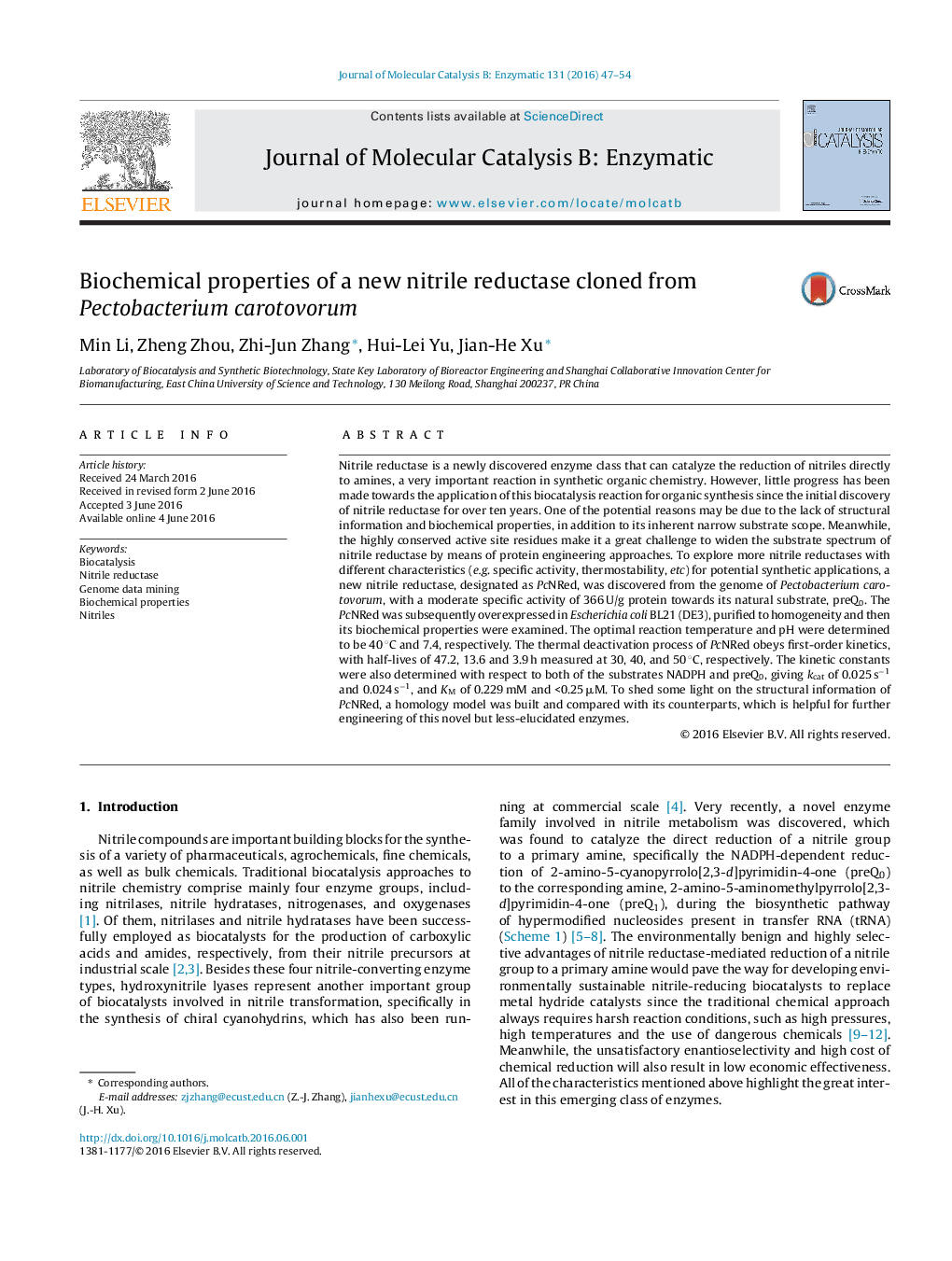| کد مقاله | کد نشریه | سال انتشار | مقاله انگلیسی | نسخه تمام متن |
|---|---|---|---|---|
| 69459 | 48770 | 2016 | 8 صفحه PDF | دانلود رایگان |

• A new nitrile reductase with a specific activity three times of the highest value was cloned from Pectobacterium carotovorum.
• The enzyme was stable and highly active over a wide range of temperatures.
• Homology modeling and docking analysis were performed to explain its higher catalytic activity.
Nitrile reductase is a newly discovered enzyme class that can catalyze the reduction of nitriles directly to amines, a very important reaction in synthetic organic chemistry. However, little progress has been made towards the application of this biocatalysis reaction for organic synthesis since the initial discovery of nitrile reductase for over ten years. One of the potential reasons may be due to the lack of structural information and biochemical properties, in addition to its inherent narrow substrate scope. Meanwhile, the highly conserved active site residues make it a great challenge to widen the substrate spectrum of nitrile reductase by means of protein engineering approaches. To explore more nitrile reductases with different characteristics (e.g. specific activity, thermostability, etc) for potential synthetic applications, a new nitrile reductase, designated as PcNRed, was discovered from the genome of Pectobacterium carotovorum, with a moderate specific activity of 366 U/g protein towards its natural substrate, preQ0. The PcNRed was subsequently overexpressed in Escherichia coli BL21 (DE3), purified to homogeneity and then its biochemical properties were examined. The optimal reaction temperature and pH were determined to be 40 °C and 7.4, respectively. The thermal deactivation process of PcNRed obeys first-order kinetics, with half-lives of 47.2, 13.6 and 3.9 h measured at 30, 40, and 50 °C, respectively. The kinetic constants were also determined with respect to both of the substrates NADPH and preQ0, giving kcat of 0.025 s−1 and 0.024 s−1, and KM of 0.229 mM and <0.25 μM. To shed some light on the structural information of PcNRed, a homology model was built and compared with its counterparts, which is helpful for further engineering of this novel but less-elucidated enzymes.
Figure optionsDownload as PowerPoint slide
Journal: Journal of Molecular Catalysis B: Enzymatic - Volume 131, September 2016, Pages 47–54